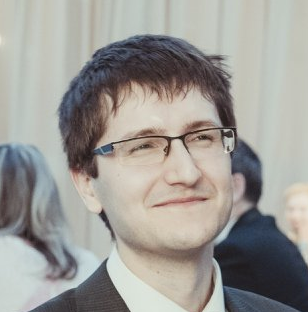New Academy of Finland postdoctoral researchers explore new materials, mathematical modelling, and computer security

Zoran Cenevhas received funding for a project that aims to develop a new printing method for producing 2D/3D objects using aerosolized particles and a focused laser beam. This will allow for printing of 2D or 3D objects with sub-micron resolution, which is far beyond what is currently available.
Luk├í┼í Flaj┼ímanÔÇÖs project ÔÇťBridging MagnonsÔÇŁ develops new techniques for exploiting the phenomena of spin waves in materials. Mobile phone and WiFi technology rely on microwave processing, and the components developed in this project could potentially enable much smaller and more powerful devices.
Lachlan Gunnis aiming to prevent computer hackers being able to exploit a common type of bug called ÔÇśmemory corruption vulnerabilitiesÔÇÖ. These bugs are a major risk to computer security; Microsoft state that they make up seventy percent of their reported vulnerabilities. The goal of the project is to develop new techniques for defending against them.
Tom GustafssonÔÇÖs project ÔÇťAdaptive high-order mortar methods for computational contact mechanicsÔÇŁ is designing new algorithms and methods for mathematical modelling for complex engineering simulations
Shinji KoshidaÔÇÖs funding will support his continuing work into statistical mechanics in the project ÔÇťCoupling of Gaussian free fields and SchrammÔÇôLoewner evolutions on multiply connected domainsÔÇŁ.
Laure Mercier de Lepinay has received a grant for the project ÔÇťVacuum forces between superconductors probed with microwave optomechanicsÔÇŁ to explore the incredibly small forces that quantum fluctuations exert on materials. These forces have been measured before, but never using superconducting materials, and Dr Mercier de Lepinay hopes that doing so will shed more light on the phenomen.
Carlo Rigoni is looking to create a new class of synthetic materials that could behave biologically. The project ÔÇťDissipative functional nanomaterials with non-equilibrium magnetic and photonic responsesÔÇŁ will try to make nanomaterials with structures that can be controlled via energy dissipation.
Owies Wani is producing new materials inspired by ÔÇťhomeostasis ÔÇö natureÔÇÖs ability to resist changes imposed by the environment. He will produce a resilient and interactive material that if strained under load would have an inbuild mechanism to return to initial state and thereby maintain its integrity. This will potentially be useful for the emerging field of soft-robotics.
│óż▒▓§├Ą│┘ż▒▒│┘┤ă┬ß▓╣:

New Academy projects will investigate drug development, superconductivity and emotional game experience
There are altogether 12 new Academy of Finland projects at the Aalto School of Science. Funding was received from all the three Academy of Finland Research Councils: Biosciences, Health and the Environment, Culture and Society and Natural Sciences and Engineering.

Aalto School of Science celebrates five new Academy Research Fellows
Manohar Kumar studies quantum information, Ivan Lomakin 3D atomic data reconstruction, Kezilebieke Shawulienu exotic materials, Arno Solin probabilistic principles and neural network models and Marijn van Vliet the visual and auditory language systems in the brain

Nearly 20 million euros for research
The Academy of Finland funding brings nine new posts as Academy Research Fellow, 15 new Postdoctoral Researchers and 24 new Academy Projects ╔ź╔ź└▓ University.

New Academy Projects to be launched in September
New Academy Projects funded by the Academy of Finland involve expertise from all six Aalto schools

Read more news

Herd immunity may not work how we think
A new study from researchers at Aalto University suggests that our picture of herd immunity may be incomplete ÔÇö and that understanding how people are connected could be just as important as knowing how many are immune.
Aalto computer scientists in ICML 2025
Department of Computer Science papers accepted to International Conference on Machine Learning (ICML)
New quantum record: Transmon qubit coherence reaches millisecond threshold
The result foreshadows a leap in computational capabilities, with researchers now inviting experts around the globe to reproduce the groundbreaking measurement.






